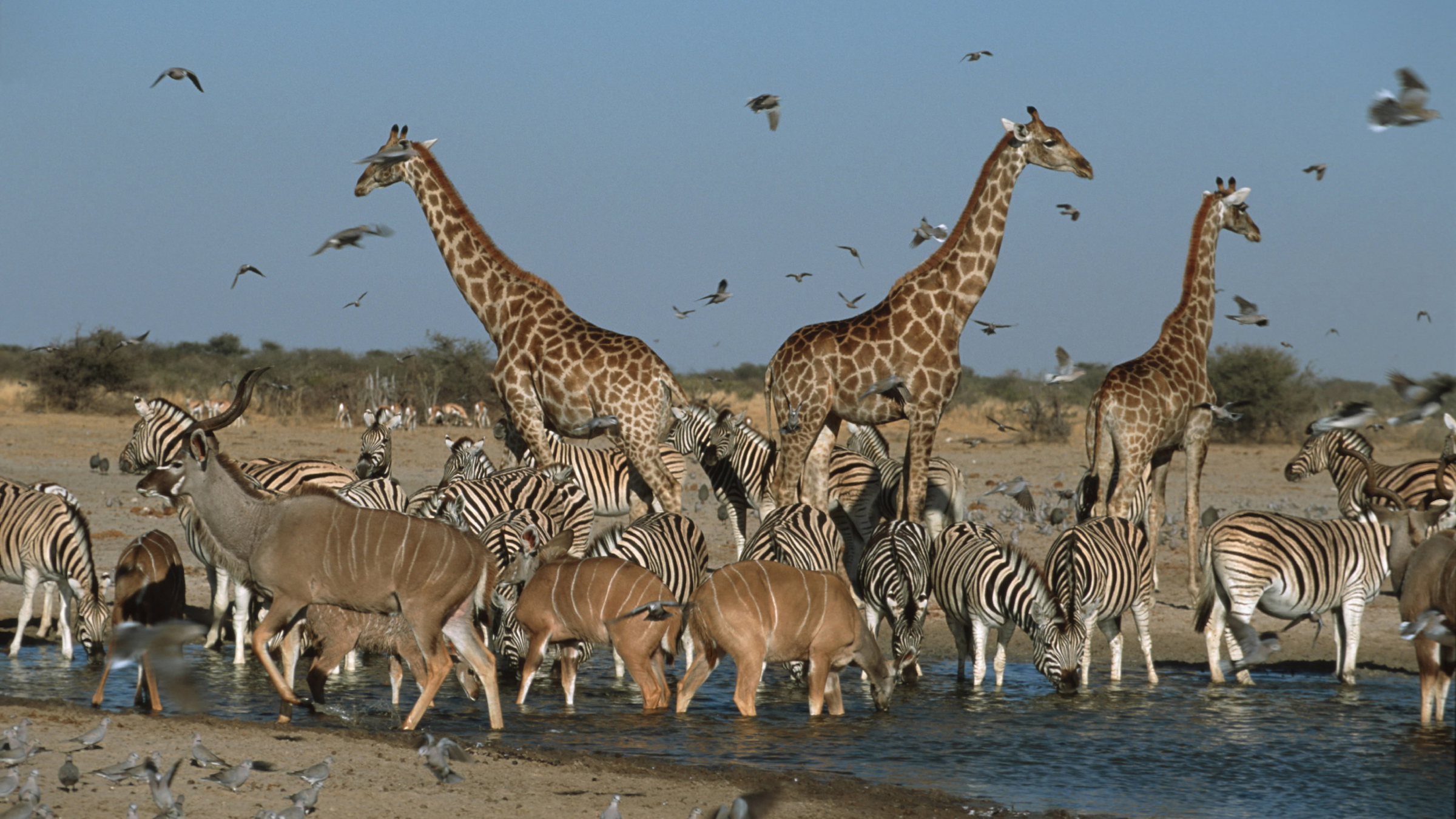The smallest and largest creatures make up most of Earth's biomass, surprising study finds
Contrary to a finding from the 1960s, a new study reveals that the bulk of Earth's biomass comes from giant and tiny organisms.

Scientists have spent five years classifying the size, mass and population of all living organisms, and at the end they made a surprising discovery — that the tiniest and largest living entities on Earth dominate by sheer mass.
To tackle this gargantuan task, the team, led by biologists from Rutgers University in New Jersey, and the University of British Columbia, divided life into 36 categories across terrestrial, marine and subterranean environments. Within each group, they identified the biggest, smallest and most common body size. Then, combining that information with pre-existing data on each group's biomass, they estimated how much of the Earth's biomass each category comprised.
Forest plants had the highest biomass and amphibians had the lowest, according to their findings, which were published on March 29 in the journal PLOS One.
Study co-author Malin Pinsky, an associate professor in the Department of Ecology, Evolution, and Natural Resources at Rutgers University, told Live Science that this sort of survey is "the first time this has ever been done."
Related: How big can animals get?
In the 1960s, aquatic ecologists found total biomass concentration remained constant across wildly different scales, indicating that size was evenly distributed among various species. Pinsky said his team had expected to find "roughly the same amount of life at every body size" as previous studies also predicted. Instead, the results revealed that nature favors size at its extremes. "The world we see often seems like it's full of lots of small insects and butterflies," Pinksky said. "And yet, what we've discovered is actually those are sort of intermediate body sizes that aren't necessarily all that common." Rather, marine and soil bacteria, which are considered small, have more biomass than intermediately sized insects.
The investigation also yielded that this pattern held across different types of species, and was even more evident in terrestrial creatures than marine dwellers. As for humans, Homo sapiens' size may be large relative to that of another species, but human biomass can't compete with other biological groups.
Get the world’s most fascinating discoveries delivered straight to your inbox.
Setting this survey apart from other similar projects is its incorporation of groups like undersea microbes and producers like kelp and sea grasses, which previous studies excluded, though they account for nearly half of ocean biomass.
Among the 36 categories, which included lifeforms such as reptiles and mollusks, the most massive populations belonged to plants and bacteria. Of these, the smallest were microscopic bacteria while the largest included vast underground networks of fungi and tree roots. These groups collectively dwarf the biomass of animals such as humans, livestock and wild terrestrial animals. And while humans are relatively large and fit into the bigger end of the size spectrum, our biomass can't compete with that of soil and marine protists that are invisible to the eye.
"Besides whales, there are no other organisms bigger than corals and mangroves," lead author Eden Tekwa, a quantitative ecologist who began the research as a postdoctoral fellow at Rutgers, finished it at the University of British Columbia, and currently studies biodiversity as a research associate at McGill University in Canada, told Live Science.
The study not only reveals how Earth's biomass is currently distributed , but also what the future may look like. Tekwa said the team quantified the amount of carbon in each group, and found smaller life forms generally have shorter lifespans, so their carbon is released into the atmosphere at a faster clip, potentially contributing to climate change.
"It also gives us a way to understand how the biosphere changes within environments," Tekwa said. Fish are decreasing in size because of fishing and the warming climate. Studying how organism size trends with a changing environment offers insight on what kind of food sources will be available in the future.
"Body size is one of the most basic characteristics of life on Earth," Pinsky said. "Understanding how life is distributed across different body sizes is fundamental to understanding life on Earth."

Elana Spivack is a science writer based in New York City. She has a master's degree from New York University's Science Health and Environmental Reporting Program and a bachelor's from Kenyon College in Ohio. She's written for Inverse, Popular Science, BitchMedia and others.


